12 Classic Bolt-Action Rifles That Changed Modern Warfare
The history of bolt-action rifles is intertwined with the evolution of modern warfare itself. These rifles became synonymous with the power and precision needed for successful military operations. From the trenches of World War I to the battlegrounds of the Second World War, bolt-action rifles proved their worth in countless engagements. Their influence shaped both the tactics and technologies that followed. In this article, we’ll delve into the history and impact of some of the most important bolt-action rifles ever made.
This post may contain affiliate links, which helps keep this content free. Please read our disclosure for more info.
Mauser Model 1898

The Mauser Model 1898, introduced by Germany, became one of the most influential rifles in military history. It was known for its robust bolt design, which made it reliable in the harshest conditions. This rifle was chambered in the 7.92x57mm Mauser cartridge, which was one of the most powerful of its time. The Mauser’s design was widely copied by other nations, influencing countless military firearms. Today, its market value can range from $800 to $1,500, depending on condition and historical significance.
This rifle’s influence extends far beyond the battlefield, as it set the standard for bolt-action rifles globally. It played a key role in both World War I and World War II, where German forces relied on its precision. The Mauser’s action became the foundation for many subsequent rifle designs. Even today, collectors and military historians seek out original versions. Its legacy as the go-to bolt-action rifle for many nations cannot be overstated.
Lee-Enfield No. 4 Mk I
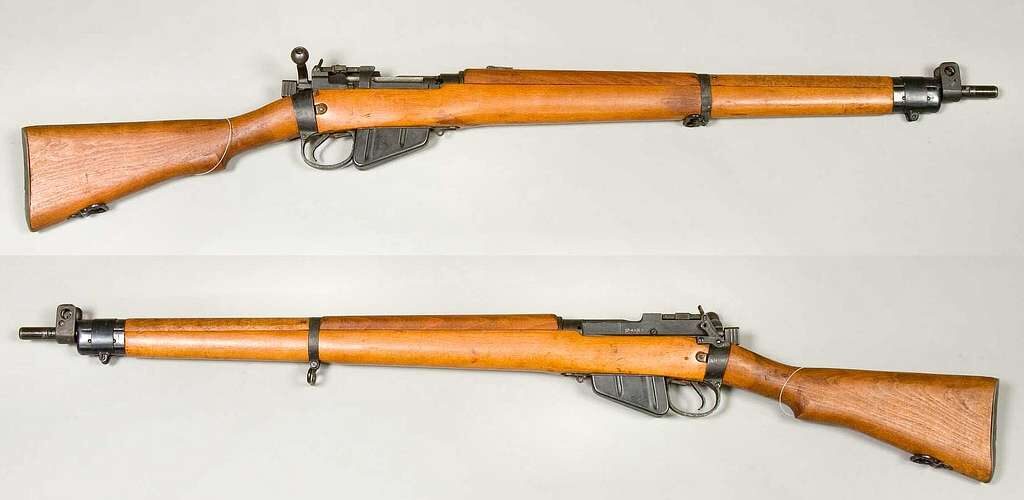
The Lee-Enfield No. 4 Mk I was adopted by Britain in 1941 and became the standard infantry rifle for the British and Commonwealth forces. Known for its fast bolt action, it allowed soldiers to fire at a rapid rate. The rifle had a ten-round magazine, enabling sustained fire in combat situations. It was highly reliable and effective in both World War II and Korea. The market value for this rifle typically ranges from $400 to $800 depending on condition and rarity.
The No. 4 Mk I became a symbol of the British army’s resilience and firepower. It was chambered in the .303 British cartridge, which gave it substantial stopping power. After the war, many were put into reserve and training units, keeping the rifle in service for decades. Its design influenced future military firearms, especially in terms of rapid cycling and durability. Today, it remains a popular collector’s item and is often used in shooting competitions.
Mosin-Nagant M1891
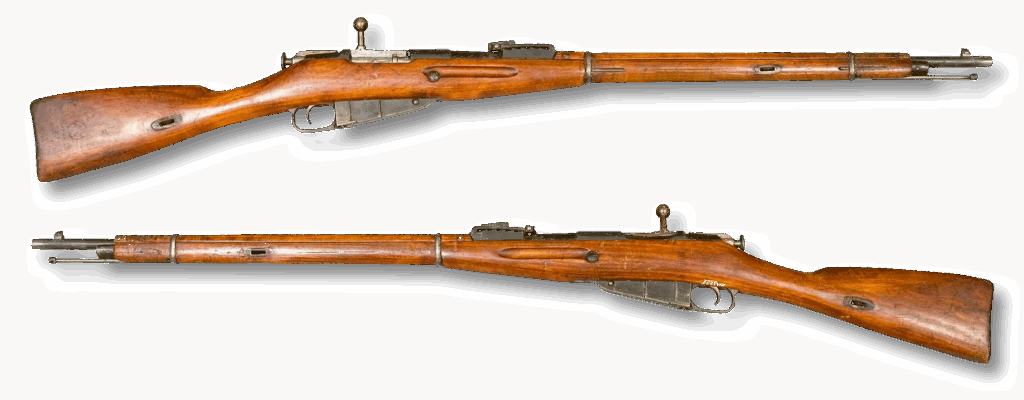
The Mosin-Nagant M1891, adopted by the Russian Empire, was one of the most widely produced rifles of the 20th century. It was a bolt-action rifle chambered in the 7.62x54mmR cartridge, known for its rugged durability. The rifle saw extensive use in both World War I and World War II. Its production numbers exceeded 37 million, making it a staple weapon for Soviet forces. Collectors often find surplus models for prices between $300 and $600, depending on condition and origin.
The Mosin-Nagant became known for its ability to perform under harsh conditions, a crucial feature for the Russian winters. Its simplicity made it easy to maintain and repair, even in the field. The rifle’s bolt action became a favorite for snipers during WWII, with specially modified versions achieving legendary status. After the war, the rifle saw continued use in various conflicts. The Mosin-Nagant remains popular with collectors and recreational shooters due to its history and affordability.
Karabiner 98k
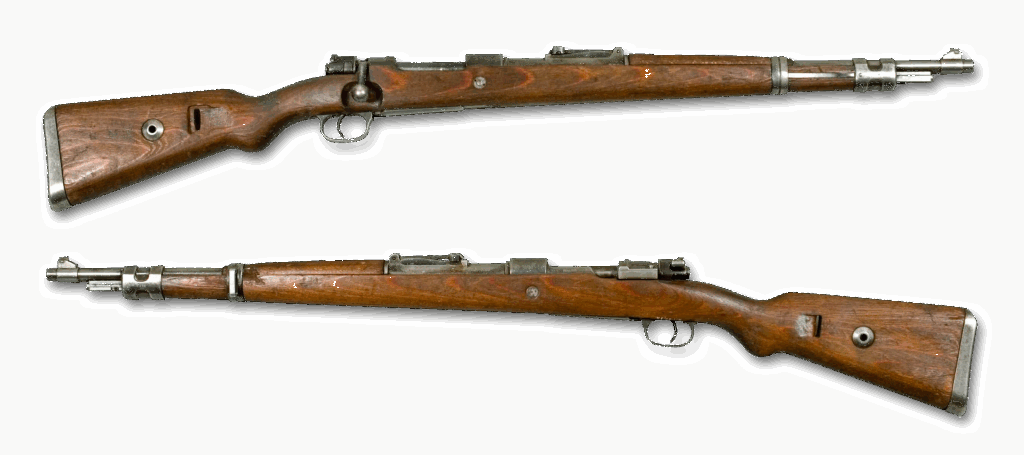
The Karabiner 98k was the standard issue rifle for German troops during World War II. This Mauser-designed rifle was chambered in 7.92x57mm and became renowned for its precision and stopping power. It replaced the earlier Karabiner 98b and was produced in massive numbers during the war. A typical market price for the Karabiner 98k today is around $500 to $1,000, with rare or well-preserved models fetching higher prices. It was also one of the most important sniper rifles of the conflict.
The 98k’s design was a refinement of the earlier Mauser 98, offering a shorter and lighter rifle that could be easily carried in the field. It had a five-round internal magazine, which was reloaded using stripper clips. The rifle’s excellent accuracy and long-range performance made it a highly effective infantry weapon. Post-war, many 98ks were captured by Allied forces and distributed as surplus. Its legacy lives on in modern sniper rifles, with the Mauser 98k influencing designs long after the war ended.
M1903 Springfield
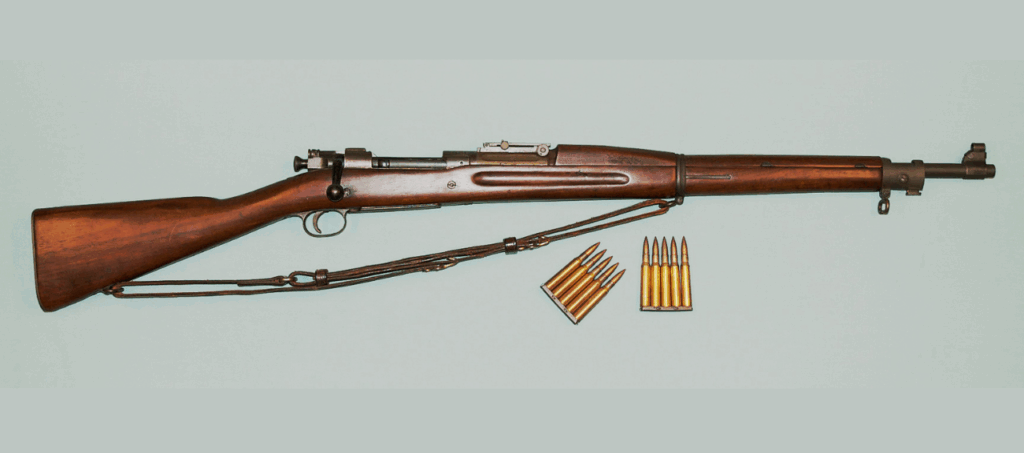
The M1903 Springfield was adopted by the United States Army in 1903 and served through both World Wars. It was chambered in .30-06 Springfield, which became one of the most famous military cartridges. Known for its accuracy and ruggedness, the rifle had a five-round internal magazine and was used in both regular infantry and sniper roles. The M1903 Springfield can typically be found on the market for $700 to $1,200 depending on condition and provenance.
During World War I, the M1903 was the primary infantry rifle, providing American forces with a reliable bolt-action weapon. Its precision made it ideal for long-range engagements, and it was widely used by snipers during the Second World War with the addition of a scope. The M1903 helped shape U.S. military tactics, emphasizing the importance of marksmanship. Today, it is highly regarded by collectors for its historical value and is a staple in both military history collections and shooting competitions.
Mannlicher M1895
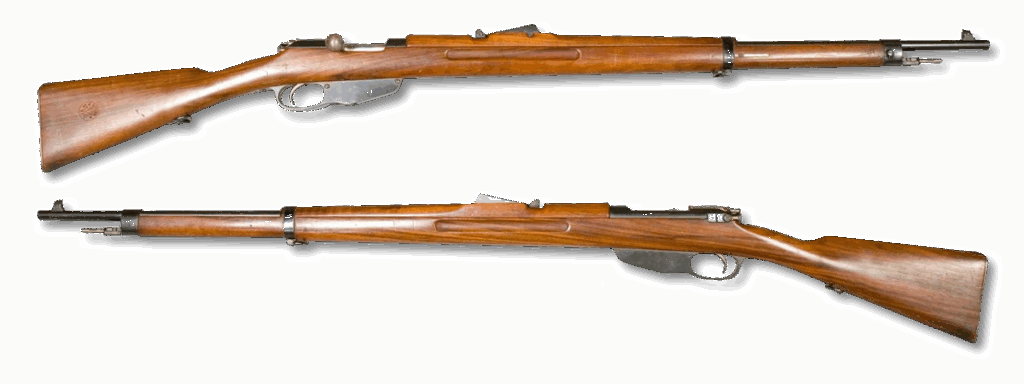
The Mannlicher M1895 was a unique straight-pull bolt-action rifle that entered service with the Austro-Hungarian Army. It was chambered in 8x50mmR and featured a fast cycling straight-pull mechanism, allowing soldiers to cycle the bolt more rapidly. This feature made it a forerunner of more modern, high-rate-of-fire bolt-action designs. In today’s market, examples of the M1895 can be valued between $600 and $1,000, depending on condition and rarity.
Its straight-pull bolt design did not catch on worldwide but represented an early experiment in speeding up bolt-action reloading. The rifle was used extensively in World War I and was known for its ruggedness and ability to operate in harsh conditions. Despite its relatively limited adoption, the Mannlicher M1895 influenced future bolt-action designs and remains a notable example of innovative military rifle engineering. Collectors today value the rifle for its rarity and distinctive design.
Lee-Metford Rifle
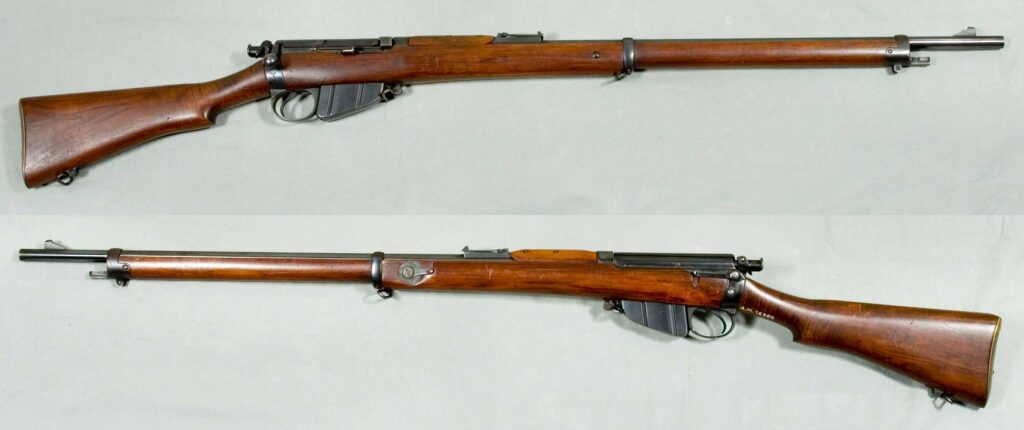
The Lee-Metford rifle was introduced in 1888 by the British Army and was the first to combine the Lee action with Metford rifling. It was chambered in .303 British and was used by British forces for several decades, especially in the late 19th and early 20th centuries. The Lee-Metford played a crucial role in the British Army’s adoption of rapid-firing bolt-action rifles. Depending on condition, it can be worth between $500 and $900 today, particularly in well-maintained or historically significant versions.
This rifle’s introduction marked a shift in infantry tactics, allowing British forces to fire quickly and accurately. It was later replaced by the Lee-Enfield, but its design influenced the development of later bolt-actions. The rifle was known for its reliability and ease of maintenance, even in the field. Its legacy lives on in the numerous variants and designs that followed, particularly the Lee-Enfield Mk III. Collectors admire the Lee-Metford for its historical importance and as a precursor to one of the most iconic military rifles ever produced.
SMLE Mk III
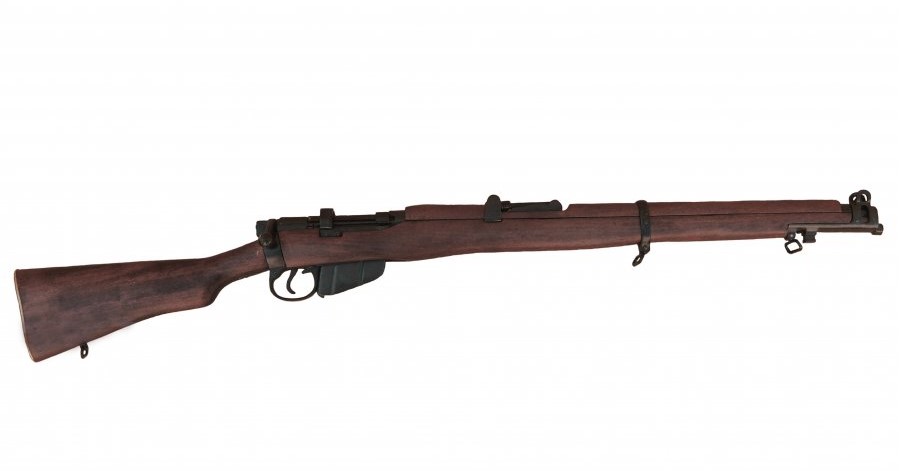
The Short Magazine Lee-Enfield Mk III, or SMLE Mk III, was introduced in 1907 and became the standard rifle for the British Army in World War I and World War II. It was chambered in .303 British and featured a ten-round magazine, making it one of the fastest bolt-action rifles of its time. Surplus SMLE Mk III rifles are typically priced between $400 and $800, with rarer models or those in excellent condition fetching higher prices.
This rifle was renowned for its accuracy and rate of fire, often enabling soldiers to deliver more shots than other bolt-action rifles of the era. Its design was optimized for close-range combat, with the ten-round magazine allowing for sustained fire in trench warfare. The SMLE Mk III became an essential part of British infantry tactics, influencing later rifle designs. After World War II, the rifle continued in service for several decades and is still highly regarded by collectors and military enthusiasts.
Enfield L42A1
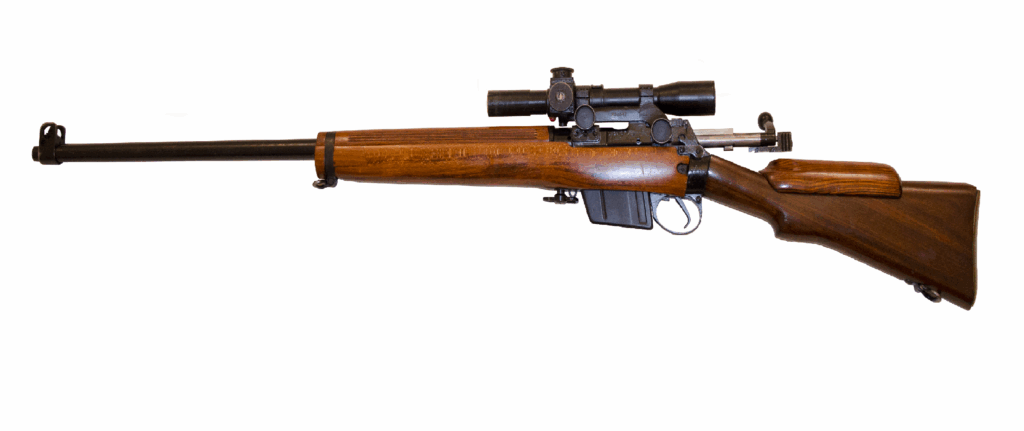
The Enfield L42A1 was a British sniper rifle introduced in 1970, designed to fire the 7.62x51mm NATO cartridge. It was based on the SMLE Mk III design but was equipped with a long-range scope, making it an accurate and reliable sniper rifle. The L42A1’s market value today ranges from $1,000 to $1,500, with higher values for well-preserved examples or those with matching serial numbers.
This rifle was used by the British Army until the 1980s and saw service in conflicts like the Falklands War. The L42A1 was noted for its exceptional accuracy and was used by British snipers during its time in service. The rifle’s legacy is seen in the continued use of bolt-action sniper rifles in military and law enforcement roles. Its influence on sniper tactics remains significant, showing that bolt-action rifles still have a place in precision shooting.
Winchester Model 70

The Winchester Model 70, introduced in 1936, is one of the most iconic civilian bolt-action rifles, known for its precision and reliability. While not initially a military rifle, its design drew heavily from military bolt-action concepts and influenced shooting sports and precision marksmanship. The price for a well-maintained Model 70 can vary widely, but early models can range from $1,000 to $2,000 depending on condition and rarity.
The Model 70’s accuracy made it a favorite among hunters, snipers, and target shooters alike. It became a standard in the firearms industry and was widely used by civilian and military marksmen. Its impact on military bolt-action rifles is seen in its design and functionality, especially in terms of its accuracy and smooth action. Today, it remains a popular choice for both collectors and shooting enthusiasts.
Gewehr 98
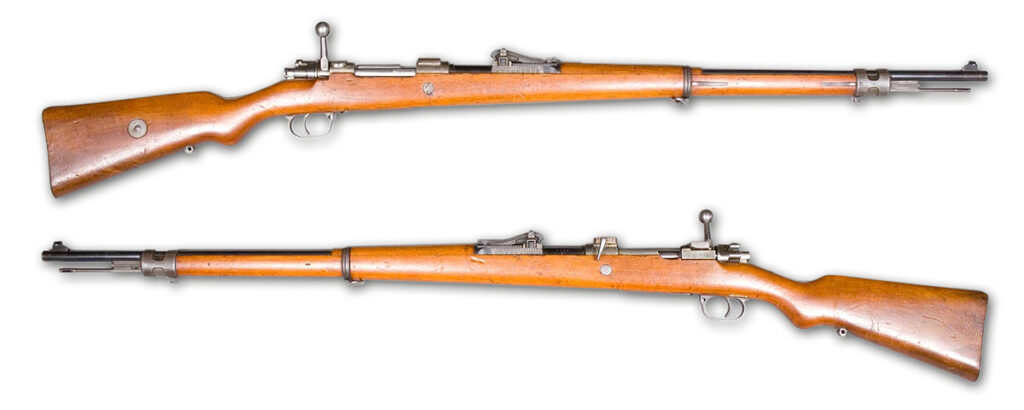
The Gewehr 98, adopted by the German Empire in 1898, became one of the most influential rifles of the 20th century. Chambered in 7.92x57mm, it was known for its precision and long-range accuracy. The Gewehr 98 is often valued between $700 and $1,500, depending on condition, markings, and rarity. It was used in World War I and influenced many later military rifle designs, including the Karabiner 98k.
Its Mauser bolt-action system became the standard for bolt-action military rifles globally. The Gewehr 98’s combination of accuracy and durability made it highly effective for German troops during World War I. The rifle’s design and its widespread use in various military engagements show its importance in shaping infantry tactics. Today, the Gewehr 98 is a highly regarded collector’s piece, respected for its role in both the history of modern warfare and firearms design.
Mauser 98k (K98k)
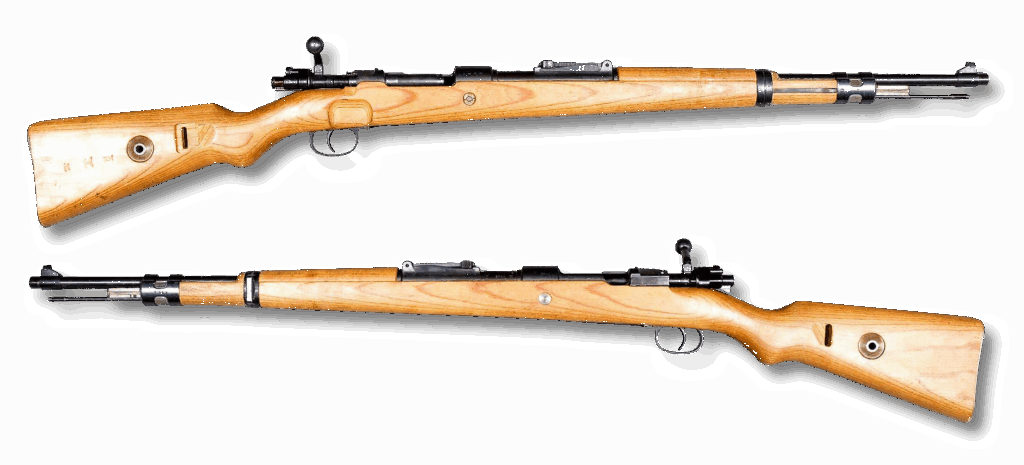
The Mauser 98k, or Karabiner 98k, was adopted by the German military in 1935 and rxemained in service through World War II. This rifle was chambered in 7.92x57mm Mauser and was known for its accuracy and robust design. Collector values for well-preserved examples range from $1,000 to $2,000. The Mauser 98k was used by German forces throughout World War II, proving its effectiveness as a standard infantry rifle.
After the war, many 98ks were captured and distributed by Allied forces as surplus, making it widely available. Its influence on the design of later rifles cannot be overstated, as many nations adopted the Mauser action for their own firearms. The 98k’s ability to deliver consistent, long-range fire made it a formidable weapon in the hands of skilled soldiers. Its legacy lives on in both the military and civilian sectors.
This article originally appeared on Avocadu.
